DIRECTOR’S CORNER
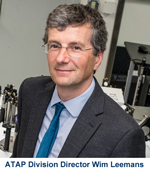 Advanced magnets are at the heart of high-energy colliders, and the facilities of tomorrow will require magnets that are even stronger as well as better and more cost-effective. Our magnet design and construction efforts are key to the luminosity upgrade of the Large Hadron Collider, and were praised in a Director’s Review at the lead laboratory for the US part of the project, Fermilab. This month we also invite you to learn about an exciting and important area of research: instrumentation for spotting and characterizing “quenches” of superconducting magnets.
Advanced magnets are at the heart of high-energy colliders, and the facilities of tomorrow will require magnets that are even stronger as well as better and more cost-effective. Our magnet design and construction efforts are key to the luminosity upgrade of the Large Hadron Collider, and were praised in a Director’s Review at the lead laboratory for the US part of the project, Fermilab. This month we also invite you to learn about an exciting and important area of research: instrumentation for spotting and characterizing “quenches” of superconducting magnets.
The people who keep us at the forefront of science have received a number of honors recently, including the AAC Prize and a student-poster award at the Advanced Accelerator Concepts Workshop, as well as four LBNL Director’s Awards and an election to APS Fellowship. I invite you to read on and learn about their achievements.
We close with exciting and eagerly anticipated news that we just received. ALS-U, the Advanced Light Source Upgrade project, has been granted Critical Decision 1 approval, the go-ahead for preliminary design of this major upgrade. ALS-U’s goals include a hundredfold increase in the brightness of the beams provided to the users. ATAP looks forward to helping meet the challenges of ALS-U, which will give this major DOE user facility for another 25 years at the forefront of science.
MAGNET EFFORTS LAUDED AT FERMILAB DIRECTOR’S REVIEW

The US HL-LHC Accelerator Upgrade Project (AUP) underwent a Fermilab Director’s Review in July. The committee was “very impressed with the report of magnet manufacturing progress.”
The US HL-LHC AUP’s main task is to fabricate, test, and deliver all the niobium-three-tin (Nb3Sn) superconducting quadrupole magnets designated Q1 and Q3 needed by CERN for the High-Luminosity LHC upgrade. LBNL’s part of this review involved readiness for CD-3b — the start-of-production Critical Decision point in DOE’s project management formalisms — for the magnets designated MQFXA. Two out of the six Level 3 MQFXA tasks are managed by LBNL: Cable Fabrication, led by Ian Pong and Charlie Sanabria, and Structure Fabrication and Magnets Assembly, led by Soren Prestemon and Dan Cheng.
Five subcommittees covered MQXFA Magnets (chaired by George Biallas from Jefferson Lab, and including Herman ten Kate and Akira Yamamoto from CERN); Crab Cavities; Cost and Schedule; Environment, Health, Safety, and Quality; and Management. DOE Program Manager Simona Rolli and Federal Project Director Jerry Kao attended as observers.
Review comments praise magnet effort
In the close-out report, the MQXFA subcommittee noted that the progress of the project “is at the required level for this stage” and that the cooperation between laboratories has “matured masterfully” and shows “a truly collaborative spirit.”
This collaborative success is especially important to the superconducting quadrupole magnet effort. Each of three U.S. national laboratories—Fermilab, Brookhaven, and Berkeley Lab—brings its particular strengths to the challenges of building these 12-tesla magnets, which will represent the first use of high-field Nb3Sn in an operating accelerator.
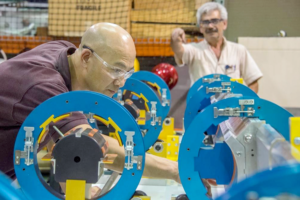 |
Dan Cheng (foreground) and Ahmet Pekedis in Berkeley Lab’s superconducting-magnet assembly facility. |
Particularly encouraging to the magnet team was the finding that “The committee is very impressed with the report of magnet manufacturing progress presented at the review.”
There were two MQXFA Magnets recommendations related to LBNL efforts: proceed to request DOE CD-2/3b approval after the testing of the second prototype, and start identifying the additional skilled and trained technical personnel needed as soon as possible.
A third recommendation was to resolve delays as soon as possible in superconductor strand procurement (a Fermilab task that had already received CD-3a approval). The delays were caused by Fermilab-supplier negotiation of contract legal issues related to the supplier’s terms and conditions. AUP project manager therefore requested and developed LBNL to become a second Nb3Sn strand procurement channel. In addition to mitigating risks, this strategy helps secure sufficient conductor to ensure adequate schedule float between the cabling task and coil winding (which is on the critical path). LBNL Procurement’s portfolio manager, Karen Lingua, along with the LBNL legal team, helped negotiate successfully to have the supplier’s terms and conditions modified, which consequently allowed both the Fermilab and LBNL procurement of Nb3Sn to go forward. LBNL’s Project Management Advisory Board (PMAB) cited this as a “best practice.”
MAGNET DIAGNOSTICS WITH A THIRST FOR A QUENCH
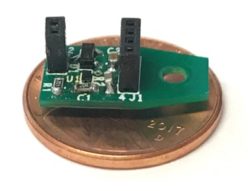
If part of a superconducting magnet warms up enough to become merely normal-conducting (say, because a portion of a cable moves slightly in response to stress or mechanical shock), a great deal of inductively stored energy (~7 MJ at nominal operating current in an LHC dipole, for instance) must be gracefully dispersed. This means loss of the stored beam as well; its also considerable energy must be diverted into a beam-dump and the experimental program is of course interrupted. Detecting a quench as early as possible is important so that magnet-protection systems can be activated, and magnet designers also desire insight into just where in the magnet it occurred.
The Superconducting Magnet Program within ATAP, which is part of the multi-lab US Magnet Development Program, has been leading the way in developing novel quench diagnostics and bringing the existing ones to a new level of performance. Read on for highlights of the diagnostic techniques that are established or under development in the group.
CD-1 FOR ALS-U
 ALS-U, a major upgrade to Berkeley Lab’s Advanced Light Source, has received wonderful and eagerly anticipated news: Critical Decision 1 approval. The CD-1 milestone in the DOE project management process signifies the beginning of the preliminary design and engineering phase.
ALS-U, a major upgrade to Berkeley Lab’s Advanced Light Source, has received wonderful and eagerly anticipated news: Critical Decision 1 approval. The CD-1 milestone in the DOE project management process signifies the beginning of the preliminary design and engineering phase.
The announcement comes two years after CD-0, the Statement of Mission Need, which followed a Basic Energy Sciences Advisory Committee statement that ALS-U is “absolutely essential” to the light-source portfolio of DOE.
The technical goal is most ambitious: a “diffraction limited” light source, which requires a storage ring at the edge of what is achievable. ATAP will play key roles. “Because the ALS is a highly subscribed user facility, ALS-U will have to be a tour de force of project management as well as science and technology,” said ATAP Director Wim Leemans.
“We look forward to working with the ALS and Engineering Divisions to reprise the success that the ALS enjoyed when originally built,” added Leemans.
“This upgrade will make it possible for Berkeley Lab to be the leader in soft X-ray research for another 25 years, and for the ALS to remain at the center of this Laboratory for that time,” said Berkeley Lab Director Mike Witherell, quoted in the Berkeley Lab news release announcing the decision.
Steve Kevan, ALS Director, added, “The upgrade will transform the ALS. It will expand our scientific frontiers, enabling studies of materials and phenomena that are at the edge of our understanding today. And it will renew the ALS’s innovative spirit, attracting the best researchers from around the world to our facility to conduct their experiments in collaboration with our scientists.”
To learn more…
Read the CD-1 news release , and explore the ALS-U website.
HONORS AND AWARDS
ATAP’s Esarey Honored with Advanced Accelerator Concepts Prize
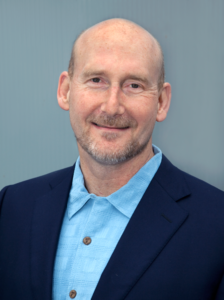 |
Eric Esarey, a senior scientist in Berkeley Lab’s Accelerator Technology and Applied Physics Division (ATAP), has been awarded the 2018 Advanced Accelerator Concepts Prize “for his pioneering theoretical research in the physics of laser-plasma accelerators.”
The prize, which recognizes outstanding contributions to the science and technology of advanced accelerator concepts, is awarded at the biennial Advanced Accelerator Concepts Workshop. Esarey joins a who’s who of researchers in cutting-edge approaches to particle acceleration, including ATAP Director Wim Leemans, who was honored in 2012. Esarey came to Berkeley Lab 20 years ago, bringing plasma-theory expertise to the burgeoning effort in laser-plasma accelerators that is now known as the Berkeley Lab Laser Accelerator Center, or BELLA. Previously he had worked for 12 years at the Naval Research Laboratory after earning his doctorate from MIT. |
Theory and experiment have been partners in BELLA from the outset in the understanding of how intense lasers and plasmas interact, how an electron beam can “surf” the resulting electromagnetic wave, and how the promise of practical accelerators based on this principle might be fulfilled. Esarey serves as BELLA Center’s deputy, leading the theoretical and computational work that guides and supports the experimental efforts, and is also senior scientific advisor of ATAP Division.
Esarey was elected a Fellow of the American Physical Society (APS) in 1996 for “seminal scientific contributions to the physics of intense laser-plasma interaction.” In 2010, the APS honored him with the John Dawson Award for Excellence in Plasma Physics Research “for experiments and theory leading to the demonstration of high-quality electron beams from laser-plasma accelerators.”
AAC 2018 Student-poster honors for BELLA’s Liona Fan-Chiang
BELLA Center and UC-Berkeley graduate student Liona Fan-Chiang was one of eight student poster honorees at the Advanced Accelerator Concepts Workshop, winning for “Planar Laser-Induced Fluorescence for Custom Laser Plasma Accelerator Targets.”
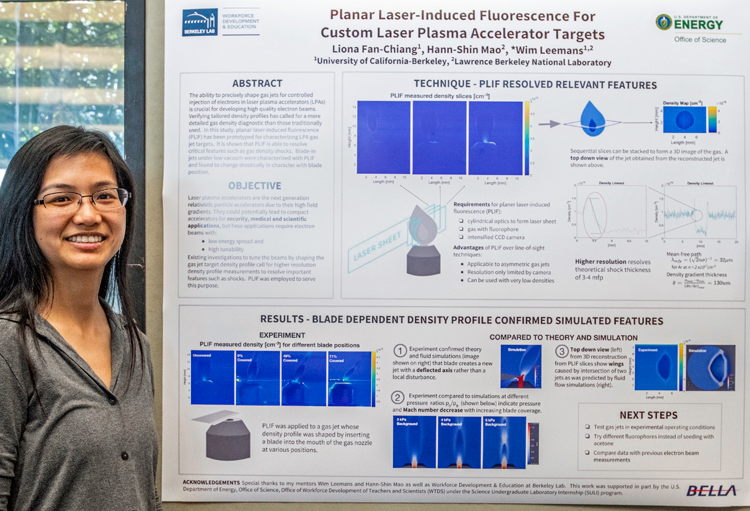 Click for larger version |
Liona Fan-Chiang previewed her award-winning presentation when DOE’s General Accelerator R&D Program Comparative Review came to LBNL in August 2018. Leemans and staff scientist Hann-Shin Mao collaborated with her on the work described in the poster. |
The win continues an emerging tradition: Kelly Swanson of BELLA and UCB, who like Fan-Chiang is one of Leemans’s students, won student-poster honors at AAC 2016, as did Manuel Kirchen, a BELLA visitor from the University of Hamburg and DESY.
Berkeley Lab’s fruitful association with AAC continues
Fan-Chiang’s presentation was part of a strong Berkeley Lab presence (28 participants, who among them gave 20 orals, including three invited plenaries; three working-group summaries; and 6 posters) at the Workshop.
In 2020, the AAC Workshop will be hosted by Berkeley Lab (which had co-organized the 2008 AAC, together with UC-Berkeley). Esarey will chair the 2020 event.
ATAP Achievers Recognized with Director’s Awards
At the upcoming annual Berkeley Lab Director’s Awards ceremony, four ATAP people will be recognized with the Berkeley Lab Citation: Qing Ji for scientific excellence, Don Syversrud for outstanding achievements across the 40-year career from which he just retired, and Ina Reichel and Tom Scarvie for outreach excellence as part of the tireless tour guide team at the Advanced Light Source.
 |
|
Qing Ji’s career in applied physics has consistent themes under its topical diversity: comprehensive understanding of ion-beam and ion-source physics; collaborative work (often with private industry); and mastery of both experimental and computational techniques. Exemplifying the traditions and spirit of ATAP and LBNL by being both individually excellent and a team player, she has become a sought-after collaborator on difficult projects.
Most recently her career has taken her into fields aligned with ATAP’s goals in “bringing the accelerator to the application.” In laser-driven ion acceleration, which is at the edge of the state of the art in accelerator science, she plays a major role (particularly in the crucial area of beam transport). She also brings her beam-transport expertise to a potentially disruptive compact ion accelerator based on micro electromechanical systems (MEMS) technology, in an ARPA-E supported collaboration with Cornell University.
Ji has also been a tireless supporter of diversity, equity, and inclusion in a field where women are highly underrepresented and therefore have little peer support and sparse career role models. She presently sits on the Physical Sciences Area Workplace Life committee and serves as the Division’s appointee to the LBNL Women Scientists and Engineers Council, and has been doctoral-research advisor to three women students who have gone on to build successful scientific careers in their own right.
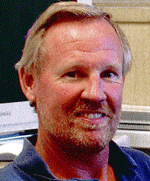 |
|
Don Syversrud, mechanical engineering technical superintendent matrixed to ATAP, has spent most of his adult life thus far doing extraordinary things to support accelerator-based science.
A second-generation LBNL career employee, Syversrud has supported experimental facilities ranging from the Bevalac to BELLA. (For perspective: people not yet born when he began his career might now be fullfledged scientists in their own right.) The most recent of his many projects on behalf of ATAP—overseeing and helping perform mechanical installation of two new 100-terawatt laser systems at BELLA—was also in some ways his most difficult. It involved complicated inter-relations of equipment, such as lasers and optical beamlines, in a constrained physical setting, with a need to complete the task so that discovery science in a competitive field could get underway.
Across those 40 years, Don built a reputation for doing the most difficult things and doing them right. He understood electrical as well as mechanical technology and bridged the worlds of technicians and of engineers. Don went into retirement knowing that his tradition of excellence will be carried forward, as he made a point of being not only supervisor, but also mentor and role model, to a generation of young engineering technologists.
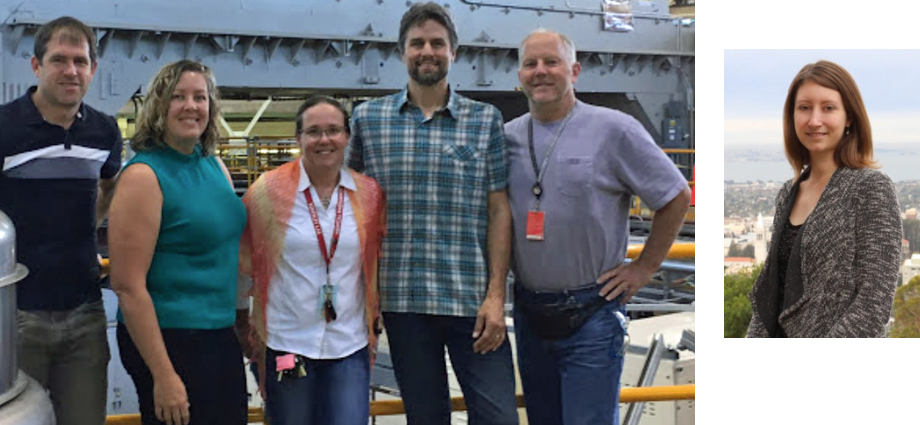 L-R: ALS beamline scientists Dula Parkinson and Christine Beavers; ATAP Outreach and Education Coordinator Ina Reichel; ALS Operations Supervisor Tom Scarvie, also of ATAP; ALS Chemical Safety Specialist Doug Taube; and ALS Communications Director Ashley White. |
|
The Advanced Light Source, a Department of Energy user facility for synchrotron light, has been a showpiece of Berkeley Lab and a go-to destination for visitors throughout its 25-year history. Some 150 groups a year, ranging from elementary school science classes to VIPs, learn firsthand about this remarkable machine and the wide-ranging scientific uses of its beams. Giving them an experience equal to this opportunity takes people who deeply understand the facility and know how to convey their expertise and enthusiasm in terms non-scientists can understand.
The guides align their efforts with the nature and specific interests of the widely varied tour groups—and their demanding “day jobs”—in accommodating as many as 150 groups a year. Many perform additional outreach activities as well.
Two ATAP employees — Outreach and Education Coordinator Ina Reichel and ALS Operations Supervisor Tom Scarvie — were among the six people named for Outreach honors as ALS Tour Guides.
Jean-Luc Vay Named as APS Fellow
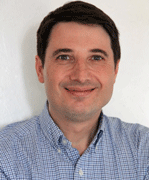
Jean-Luc Vay, head of ATAP’s Accelerator Modeling Program, has joined the ranks of Fellows of the American Physical Society “for development of novel methods for simulating beams and plasmas and application of these methods to accelerator physics.” He joins 27 present and former members of ATAP and its predecessor organizations who have received this honor. Four other Berkeley Lab researchers also received the distinction this year.
After earning his doctorate in 1996 from the University of Paris, Vay came to LBNL as a postdoctoral researcher and was appointed as a career staff member in 2000. He received the 2013 US Particle Accelerator School Prize for Achievement in Accelerator Physics and Technology for original contributions to the development of novel methods for simulating particle beams, particularly the Lorentz boosted frame techniques, and for the successful application of these methods to multi-scale, multi-species problems. Vay also received the 2014 NERSC Award for Innovative Use of High Performance Computers for his work on boosted frame and novel spectral decomposition techniques.
WORKPLACE LIFE
Energizing DEI with ERGs
In the Labwide priority of improving diversity, equity, and inclusion (see “Planning 365 DEIs of Progress,” ATAP News, April 2018), Employee Resource Groups (ERGs) are a key to success.
ERGs are associations of employees, organized around a primary dimension of diversity or inclusion, that have strategic initiatives, deliverables, and policy-related goals as stated annually in each ERG’s charter. ERGs allow employees of all levels to participate more directly in the Lab’s ongoing DEI initiatives, and assist Berkeley Lab in fully integrating DEI into our day-to-day business practices.
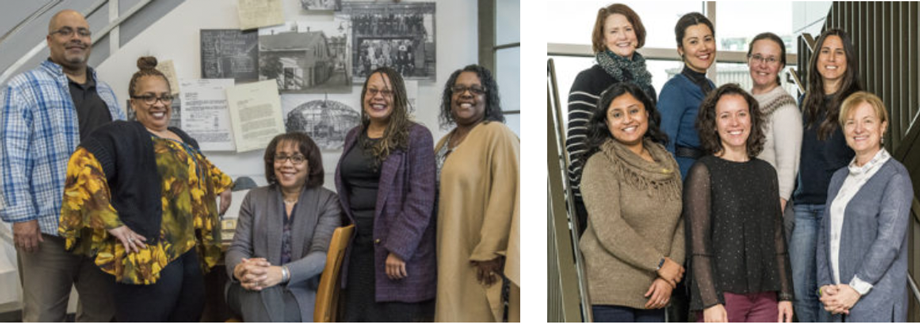 African American ERG (left) and Women Scientists and Engineers Council are among seven such groups working to implement the Lab’s commitment to DEI.
African American ERG (left) and Women Scientists and Engineers Council are among seven such groups working to implement the Lab’s commitment to DEI.
Berkeley Lab supports ERGs that are open to all employees and are formed around primary diversity dimensions (e.g., ethnicity or race, national origin, gender, sexual orientation, disability, age, or veteran status) or a specific focus of inclusion in the workplace. ERGs promote opportunities for professional growth and development, provide an opportunity for informal networking, and support the Lab’s vision and values.
With official recognition comes an annual budget for work toward each ERG’s goals (for instance, offering a training class, bringing in an outside speaker, or attending a conference). ERG members may meet “on the clock” rather than during non-work hours, as the meetings are regarded as committee meetings for official Lab business.
The ERGs thus far… and counting
● The African American ERG aims to advance a diverse and inclusive work environment with a particular focus on African-American current and future employees.
● The Disability Inclusion ERG, All Access, advocates for a more accessible laboratory in design, in spirit and in operation.
● The purpose of gLoBaL (“LBL” inside of “global”) is to provide support and a sense of community for Berkeley Lab employees who have moved to the United States from another country.
● The Lambda Alliance ERG strives to enhance the work environment at Berkeley Lab for lesbian, gay, bisexual, transgender, intersex, queer, questioning, and gender-nonconforming (LGBTQ+) employees and allies.
● The purpose of the Latinxs and Native Americans (LANA) ERG is to advance a diverse and inclusive work environment for Latinx and Native American employees.
● The Veterans ERG (VERG) is to improves the work environment at Berkeley Lab for veteran employees and job seekers.
Additionally, to address issues that affect the careers of women scientists and engineers, Berkeley Lab created the Women Scientists & Engineers Council (WSEC). This long-established organization was recently integrated into the ERG structure. It is made up of Division-appointed members (ATAP’s representative is Qing Ji) in addition to volunteers.
The social aspect of improving the workplace
ERGs are not just about committee meetings and strategic plans. ERGs can organize screenings of movies related to their group, participation in outside events (the Lambda Alliance ERG participated in this year’s San Francisco Pride Parade) or an after-work mixer to get to know each other and network informally.
 All this happens because people who believe in their ERG’s mission invest their skills, effort, and goodwill. In most cases that means attending a monthly one-hour meeting, plus occasional “homework” (e.g., making arrangements for a movie screening) that people choose to take on. To explore our ERGs and learn how you can sign up for one of them, visit the Employee Resource Groups page at the Lab’s DEI website.
All this happens because people who believe in their ERG’s mission invest their skills, effort, and goodwill. In most cases that means attending a monthly one-hour meeting, plus occasional “homework” (e.g., making arrangements for a movie screening) that people choose to take on. To explore our ERGs and learn how you can sign up for one of them, visit the Employee Resource Groups page at the Lab’s DEI website.
STEM Gives a Glimpse of Roots; Ina Reichel Featured

| Reichel is the latest in a series of women from Berkeley Lab and other Department of Energy facilities to be featured in a DOE twitter feed, #SheCanStem. |
At age 14 (above left), Reichel was already a veteran of family holidays touring ruins in France and Italy, intending to study history and particularly Egyptology. Even then, though, she was interested in STEM subjects, getting high grades in science and math. During high school she refocused on electrical engineering, which seemed a richer source of good jobs than ancient Egyptian history. Waitlisted for a seat in an engineering program, she enrolled in her backup plan, physics, at Johannes Gutenberg University in Mainz, and found her calling. After a PhD from Aachen based on work at CERN, she had a postdoctoral fellowship at SLAC, then moved to ATAP’s Center for Beam Physics (predecessor of the Berkeley Accelerator Controls and Instrumentation program). Now (among many endeavors) she furthers both K-12 outreach and DEI advancement in the workplace.
SAFETY: THE BOTTOM LINE
An Area-Spanning Safety Day
 Scenes from Safety Day (l-r): Asmita Patel make one of the kickoff presentations; Csaba Toth gives unneeded paper a new lease on life in the recycling bin; Wes Tabler ensures property accountability and proper disposal of electronic waste.
Scenes from Safety Day (l-r): Asmita Patel make one of the kickoff presentations; Csaba Toth gives unneeded paper a new lease on life in the recycling bin; Wes Tabler ensures property accountability and proper disposal of electronic waste.
On August 21, ATAP and the Engineering Division once again held their annual Safety Day, this time joined by Physics Division. A morning of cleanup under a theme that says it all — “Clean Labs, Clean Shops, Clean Offices — was followed by an afternoon of Quality Assurance and ES&H Team (QUEST) assesments and management walkthroughs. Some 145 action items that will be tracked through to completion were found in ATAP and Engineering spaces; common themes include emergency-preparedness signage and improved seismic bracing. Thanks to everyone for participating in this all-day, all-hands, all-hazards event… and in particular for using appropriate personal protective equipment and staying within our skill sets and physical limits, extending our perfect record for the safety of Safety Day.
One Of Our Most Dangerous Pieces of Equipment: The Automobile
 Recently a parked car rolled downhill, jumped a curb, and ended up partly over a retaining wall near Building 71. Fortunately the car was unoccupied and did not have the momentum to hit labs and offices. Nearby ATAP personnel, following our Integrated Safety Management protocol, contacted Protective Services, notified their supervisor, and helped ensure the safety of others. It’s a reminder of the importance of setting one’s parking brake (and keeping it in proper adjustment), and when possible “curbing” the wheels, when using parking spaces on a slope.
Recently a parked car rolled downhill, jumped a curb, and ended up partly over a retaining wall near Building 71. Fortunately the car was unoccupied and did not have the momentum to hit labs and offices. Nearby ATAP personnel, following our Integrated Safety Management protocol, contacted Protective Services, notified their supervisor, and helped ensure the safety of others. It’s a reminder of the importance of setting one’s parking brake (and keeping it in proper adjustment), and when possible “curbing” the wheels, when using parking spaces on a slope.
Be careful when driving (or walking) in areas adjacent to the Lab as well, especially in the teeming campus-perimeter area. Two recent accidents on Hearst Avenue along the north side of campus occurred just a few days apart. One involved a skateboarding student who could not stop for a red light on a steep hill and collided with a Lab shuttle bus. (Note that skateboarding, inline and roller skating, and scooter riding are prohibited on the Lab site.) The only severe injury was to his pride; unfortunately, in a separate incident with no LBNL involvement, a pedestrian was struck by a car and left in critical condition.
Vision is essential to traffic safety, especially at this time of year, when sun angles can cause windshield glare during the morning and evening commutes. Keeping windshields clean and sunglasses and visors at the ready can help.
 And remember, the speed limit throughout the Lab site is nowhere higher than 15 miles per hour — lower, as posted, in some special situations. Going slower gives you shorter stopping distances and more time to see and react to trouble. Sometimes applied physics indicates backing off the accelerator!
And remember, the speed limit throughout the Lab site is nowhere higher than 15 miles per hour — lower, as posted, in some special situations. Going slower gives you shorter stopping distances and more time to see and react to trouble. Sometimes applied physics indicates backing off the accelerator!
Be Ready to Duck, Cover, and Hold On Thursday, October 18
 Where will you be at 10:18 on 10/18? May we suggest: just coming out from under your desk.
Where will you be at 10:18 on 10/18? May we suggest: just coming out from under your desk.
On Thursday October 18, at 10:15 a.m., Berkeley Lab will join over 13 million people worldwide in the annual Great Shake Out, the world’s largest earthquake drill.
When the announcement comes over the public address system, take Drop, Cover, and Hold On protective measures. (As anyone who has been through one knows, real earthquakes are self-announcing!) Continue taking shelter until the announcement that the simulated shaking has stopped. (This too will be unambiguous in a real quake; the shaking could last for as long as a few minutes.) Then we will evacuate to assembly areas until Building Emergency Teams announce the end of the drill, which should be no later than 11 a.m.
To be ready, pre-identify places in your usual areas that would offer protection as you Duck, Cover, and Hold On, and be familiar with exit routes and assembly area locations.
Mountain Lion on the Prowl
 It’s a fact, not just a scary urban-wildlands-interface legend, that one or more mountain lions (cougars) roam the Lab area. One was sighted on a recent evening near Building 88.
It’s a fact, not just a scary urban-wildlands-interface legend, that one or more mountain lions (cougars) roam the Lab area. One was sighted on a recent evening near Building 88.
It’s a tribute to the environmental stewardship of Lab employees, and Californians generally, that animals (including a top predator like a mountain lion) can thrive among so many people — but wild creatures command respect. Here are some tips on how to reduce your risk of a mountain-lion encounter and what to do if you meet the big cat anyway.